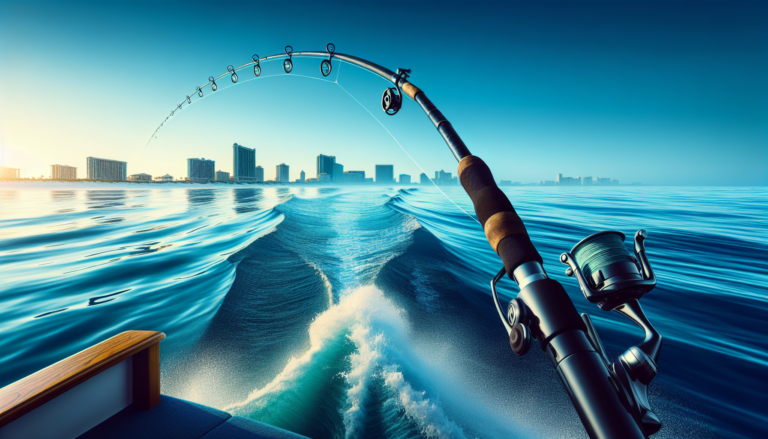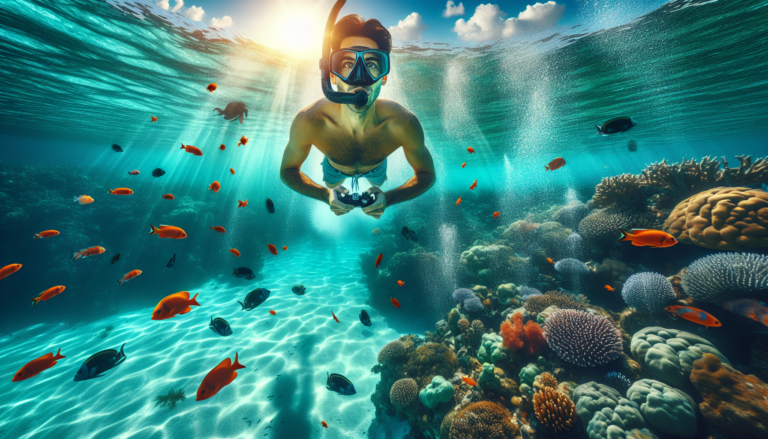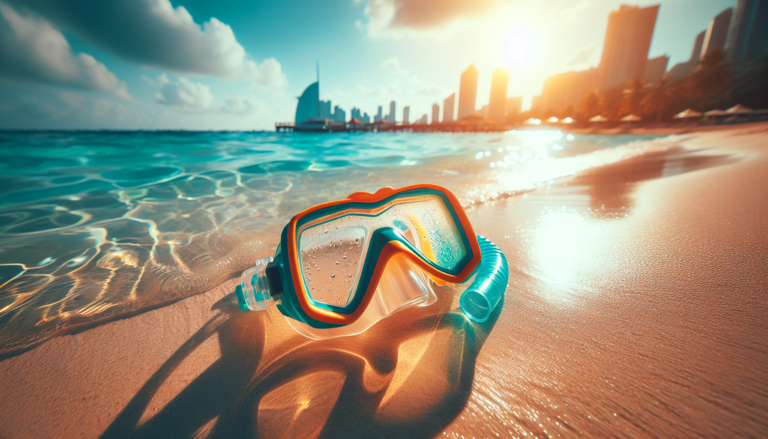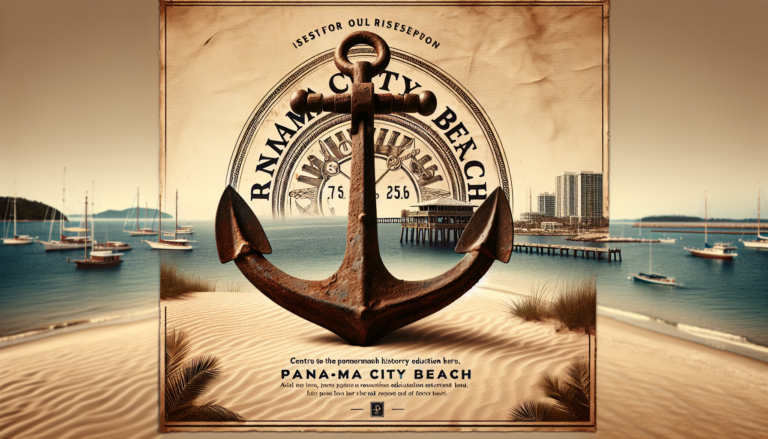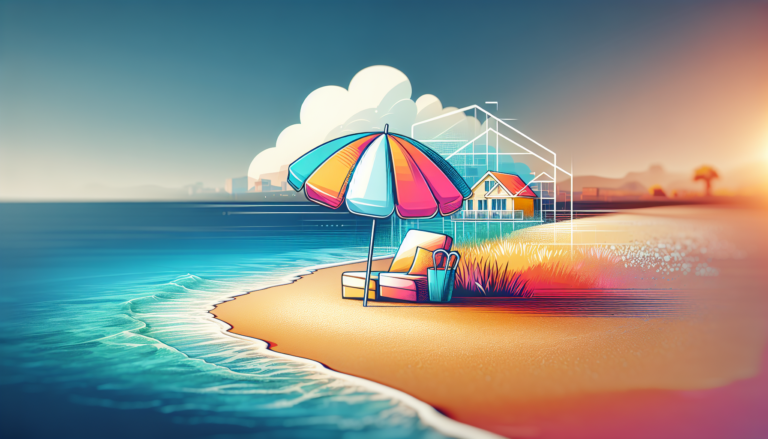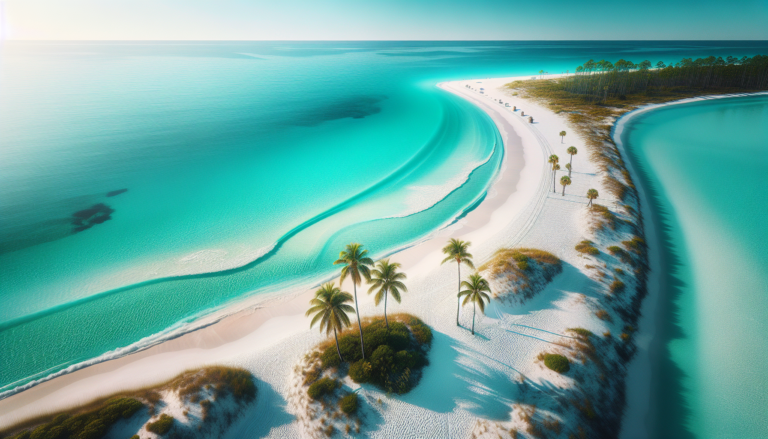How Can Visitors Get Information About Beach Safety And Lifeguard Services In Panama City Beach, Florida?
Planning a beach vacation in Panama City Beach, Florida? It’s essential to prioritize safety and have access to reliable lifeguard services. But how can visitors easily find information about beach safety and lifeguard services in this coastal paradise? This article will explore the various ways in which visitors can obtain essential information about staying safe at the beach and ensuring their peace of mind during their stay in Panama City Beach. From online resources to local contacts, we’ve got you covered!
Table of Contents
Toggle1. Panama City Beach Tourist Information Centers
1.1 Panama City Beach Visitors Information Center
When visiting Panama City Beach, one of the first places you should stop by is the Panama City Beach Visitors Information Center. Located in the heart of the city, this center is your one-stop-shop for all the information you need about the area. The friendly staff will be more than happy to provide you with brochures, maps, and answer any questions you may have.
1.2 Panama City Beach Chamber of Commerce
Another valuable resource for tourists is the Panama City Beach Chamber of Commerce. Not only do they provide information about the local businesses and attractions, but they are also knowledgeable about beach safety and lifeguard services in the area. They can guide you on how to best enjoy your time at the beach while ensuring your safety along the way.
1.3 Bay County Tourist Development Center
If you’re looking for even more information about beach safety and lifeguard services, the Bay County Tourist Development Center is another excellent resource. They have a variety of resources available to educate visitors about staying safe while enjoying the beautiful beaches of Panama City Beach. From brochures to informative videos, they have it all.
2. Online Resources
2.1 Official Panama City Beach Website
For those who prefer to gather information online, the Official Panama City Beach website is a fantastic resource to rely on. It provides comprehensive information about the beaches, including safety tips and guidelines. You can find information about the lifeguard services, flag system, and even beach rules and regulations. Make sure to check out their frequently asked questions section, as it may answer most of your queries.
2.2 Panama City Beach Flag System
To stay updated on beach conditions and potential hazards, the Panama City Beach Flag System is an essential tool. This system uses color-coded flags to indicate the current water conditions and safety level. The official website provides detailed information about each flag and what it signifies. Before heading out to the beach, be sure to check the flag status to make informed decisions regarding your safety.
2.3 Local News Websites and Apps
Local news websites and apps also offer valuable information about beach safety and lifeguard services. They often provide regular updates on beach conditions, weather forecasts, and any potential hazards. Consider downloading a local news app or visiting their websites to stay informed throughout your visit to Panama City Beach.
2.4 Social Media Accounts
In today’s digital age, social media has become an important platform for disseminating information. Many beach safety and lifeguard services in Panama City Beach have active social media accounts. Following these accounts will keep you updated on any potential risks, safety tips, and even fun events happening at the beach. Search for their official pages and hit that “follow” button to stay connected.
3. Panama City Beach Safety Flag System
3.1 Understanding the Color-Coded Flags
The Panama City Beach Safety Flag System is a crucial tool for ensuring your safety at the beach. The system uses four different colors to represent varying levels of water conditions. Each color has a specific meaning and indicates the potential risks involved.
- Green Flag: This represents calm water conditions, allowing for safe swimming. However, it is still essential to exercise caution and be aware of your surroundings.
- Yellow Flag: The yellow flag signifies moderate surf and currents. While swimming is still permitted, it is advised to exercise extra caution. Pay attention to lifeguard instructions and be mindful of any potential hazards.
- Red Flag: A red flag indicates high surf and strong currents, which can be dangerous for swimmers. Swimming is not advised when a red flag is up, and it’s crucial to listen to lifeguard warnings.
- Double Red Flag: When two red flags are flying, it means the water is closed to the public due to extremely hazardous conditions. Swimming is strictly prohibited, and entering the water would put your life at risk.
3.2 Lifeguard Tower Locations
Panama City Beach is well-equipped with lifeguard towers strategically placed along the coastline. These towers serve as observation posts for lifeguards, allowing them to monitor the beach and respond quickly in case of emergencies. Look out for the brightly colored towers, often located in high-visibility areas. Remember, it’s always a good idea to be within sight of a lifeguard tower, especially when swimming.
3.3 Meaning of Each Flag
Understanding the meaning behind each flag is crucial for your safety at the beach. As mentioned earlier, the green flag indicates calm conditions, while the yellow flag suggests moderate surf and currents. The red flag alerts beachgoers to high surf and strong currents, requiring caution. The double red flag, however, signifies that entering the water is strictly forbidden.
4. Beach Safety Tips and Guidelines
4.1 General Safety Reminders
When you visit Panama City Beach, it’s important to keep some general safety tips in mind. First and foremost, always swim in designated areas where lifeguards are present. They are trained professionals who can assist you in case of any emergencies. Additionally, be mindful of the beach rules and regulations, such as restrictions on alcohol and pets, to ensure a safe and enjoyable experience.
4.2 Rip Current Awareness
Rip currents are a significant concern at many beaches, and Panama City Beach is no exception. These powerful currents can quickly carry even the strongest swimmers away from the shore. It is crucial to be aware of the signs of a rip current, such as discolored or choppy water, and also to know how to escape if caught in one. Remember, swim parallel to the shoreline to escape the current’s pull and then swim back to shore.
4.3 Sun Protection and Heat Safety
Spending time at the beach means being exposed to the sun’s rays, which can be harmful without proper protection. Remember to apply sunscreen with a high SPF, wear a wide-brimmed hat, and use sunglasses to protect your eyes. It’s also important to stay hydrated and take breaks from the sun to prevent heat-related illnesses. Find shade under an umbrella or a beach tent to cool down and avoid excessive exposure.
4.4 Beach Rules and Regulations
To ensure the safety and enjoyment of all visitors, Panama City Beach has specific rules and regulations in place. Some common rules include no glass containers on the beach, no littering, and no fires without proper permits. It is important to familiarize yourself with these rules and follow them to maintain a clean and safe environment for everyone.
5. Beach Safety Education Programs
5.1 Panama City Beach Surf Rescue
The Panama City Beach Surf Rescue program is dedicated to providing education and training for beach safety. They offer various programs and resources for both locals and visitors. From informative seminars to hands-on training sessions, this program aims to equip individuals with the knowledge and skills needed to stay safe at the beach.
5.2 Beach Safety Seminars
Beach safety seminars are an excellent way to learn about the potential hazards and how to mitigate them. These seminars are often conducted by knowledgeable professionals who are well-versed in beach safety practices. They cover topics such as rip current awareness, sun protection, and general safety guidelines. Keep an eye out for any upcoming seminars during your visit to Panama City Beach.
5.3 Junior Lifeguard Program
For families visiting with children, the Junior Lifeguard Program is a great option to consider. This program gives kids the opportunity to learn from lifeguards and engage in fun activities aimed at teaching them about beach safety. Through hands-on experiences and interactive sessions, children can develop valuable skills and understanding of how to enjoy the beach safely.
6. Contacting Beach Patrol and Lifeguards
6.1 Beach Patrol Phone Numbers
In case of emergencies or to report any unsafe conditions, it is important to have the contact information for beach patrol readily available. Beach patrol can be reached at the following contact numbers:
- Emergency: Dial 911
- Non-Emergency: [Insert Non-Emergency Contact Number]
- Beach Patrol Headquarters: [Insert Beach Patrol Headquarters Contact Number]
Make sure to save these numbers in your phone or keep them in a safe place, so you have them on hand if needed.
6.2 Lifeguard Stations and Towers
Lifeguard stations and towers are an essential part of beach safety. They serve as the base for lifeguards who are responsible for monitoring the beach and ensuring the safety of all visitors. Familiarize yourself with the locations of the lifeguard stations and towers before heading to the beach, and aim to be within their visible range when swimming.
6.3 Emergency Services
In case of any emergencies, it is vital to know the location of the nearest emergency services. From medical emergencies to water rescues, prompt response is crucial in these situations. During your visit to Panama City Beach, take note of the nearest hospitals, urgent care centers, and fire stations to ensure you have the necessary information in case of an emergency.
7. Beach Safety Flags and Signs
7.1 Flag and Sign Locations
Beach safety flags and signs are placed strategically along the shoreline to provide important information to beachgoers. They can usually be found near lifeguard towers and other high-visibility areas. Take the time to familiarize yourself with these locations and know where to find the nearest flag or sign when necessary.
7.2 Flag and Sign Descriptions
Beach safety flags and signs play a crucial role in communicating information about current conditions and any potential hazards. The color-coded flags, as mentioned earlier, indicate the level of risk involved in swimming. Additionally, signs may provide information about specific dangers, such as rip currents or wildlife sightings. Understanding and following the instructions on these flags and signs are essential for your safety.
7.3 Signage Regulations and Standards
Signage regulations and standards are in place to ensure that the beach safety information is effectively communicated to all visitors. These regulations dictate the size, placement, and content of the signs, maximizing their visibility and clarity. By adhering to these standards, the beach authorities aim to provide consistent and accurate information to beachgoers.
8. Lifeguard Services Availability
8.1 Lifeguard Schedule and Hours
Lifeguards play a vital role in ensuring beach safety, especially during peak seasons when the number of visitors increases significantly. The lifeguard schedule and hours can vary depending on the time of year and specific beach locations. However, most lifeguard services operate during daylight hours. It is advisable to check with the local tourist information centers or the official beach website for specific lifeguard schedules during your visit.
8.2 Peak Season Lifeguard Coverage
Peak season in Panama City Beach often sees an influx of visitors, and the lifeguard coverage is scaled up accordingly. During this period, lifeguards are stationed at multiple towers along the beach, providing increased coverage and rapid response capabilities. Their presence ensures that any emergencies are promptly attended to, and visitors can enjoy their time at the beach with peace of mind.
8.3 Off-Season Lifeguard Availability
While the lifeguard coverage during the off-season may not be as extensive as during peak season, there are still lifeguards available to ensure beach safety. The specific locations and hours of operation may vary, so it is recommended to check with local tourist information centers or the official beach website for the most up-to-date information on off-season lifeguard availability.
9. Reporting Beach Hazards and Incidents
9.1 Reporting Unsafe Conditions
If you come across any unsafe conditions or hazards on the beach, it is essential to report them promptly. By reporting these issues, you contribute to the overall safety of the beach and help prevent accidents or injuries. You can contact beach patrol or lifeguards to report such conditions, providing them with accurate information about the location and nature of the hazard.
9.2 Emergency Situations
In the event of an emergency, immediate action is crucial. Dial emergency services by calling 911 or alert any lifeguards or beach patrol members nearby. Stay calm and provide them with all the necessary details to ensure a quick response. If you are not near a lifeguard tower or beach patrol, try to find someone nearby who can assist you in calling for help.
9.3 Reporting Wildlife Encounters
Panama City Beach is known for its diverse wildlife, and encounters with marine animals can be both thrilling and potentially risky. If you have a wildlife encounter, it is important to report it to the appropriate authorities such as beach patrol or lifeguards. They will assess the situation and take appropriate action to ensure the safety of both humans and animals.
10. Beach Safety Events and Campaigns
10.1 Annual Beach Safety Week
Panama City Beach hosts an annual Beach Safety Week, dedicated to educating both locals and visitors about beach safety. During this week, various events, workshops, and demonstrations are held to raise awareness about the importance of staying safe at the beach. Make sure to check the local event calendar or the official beach website to see if your visit coincides with Beach Safety Week.
10.2 Safety Outreach Programs
Safety outreach programs are organized throughout the year by the local authorities, in collaboration with beach safety organizations. These programs aim to reach a wider audience and provide them with valuable information about beach safety. Keep an eye out for these programs during your visit, as they often include interactive sessions, demonstrations, and even giveaways to promote beach safety.
10.3 Water Safety Initiatives
Water safety initiatives are ongoing efforts by the beach authorities to ensure the safety of all individuals enjoying the beaches of Panama City Beach. These initiatives include enhanced training for lifeguards, updated safety protocols, and increased awareness campaigns. By actively participating in these initiatives and spreading the word, you contribute to a safer beach environment for everyone.
In conclusion, visitors to Panama City Beach can easily obtain information about beach safety and lifeguard services through a variety of resources. Tourist information centers, online resources, and local news outlets are valuable sources of information. Understanding the beach safety flag system, along with general safety tips, is crucial for a safe and enjoyable beach experience. Educational programs, contact details for beach patrol and lifeguards, and reporting mechanisms further enhance beach safety. Stay informed, follow guidelines, and enjoy the beautiful beaches of Panama City Beach while keeping yourself and others safe.


